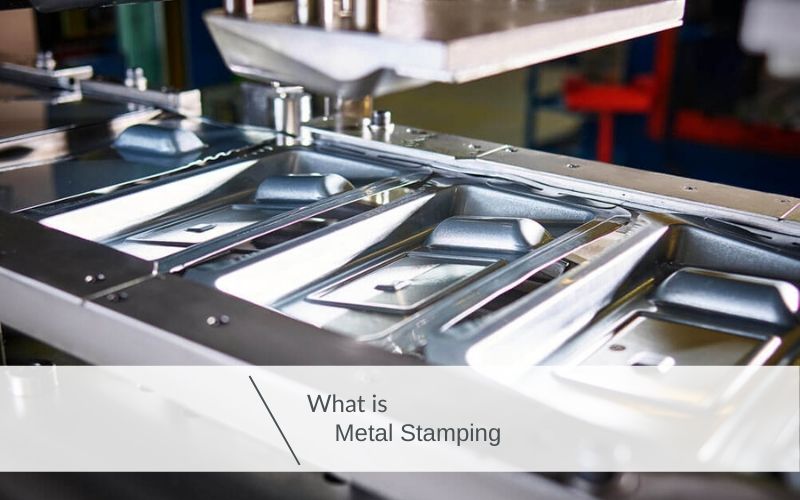Metal Stamping: Advancements Driving Industry Development
Metal Stamping: Advancements Driving Industry Development
Blog Article
Metal Stamping Advancements: Elevating Production Processes for Superior Outcomes
In the world of making procedures, steel marking has long been a keystone strategy for creating a selection of accuracy elements. With the unrelenting march of technological innovation, the landscape of steel marking is undergoing a significant change.
Evolution of Steel Marking Methods

Furthermore, developments in product scientific research have brought about the growth of high-strength alloys that can currently be effortlessly marked into intricate forms, accommodating a broader variety of industrial applications. The combination of robotics and expert system has actually further enhanced the marking process by improving rate and precision while reducing the danger of human error.

Influence of Advanced Materials
Have innovative products transformed steel stamping processes dramatically in the manufacturing market? The solution is a definite yes (Metal Stamping). The integration of advanced products has transformed steel stamping, making it possible for makers to attain greater accuracy, increased effectiveness, and improved product quality. By utilizing products such as high-strength alloys, advanced compounds, and ingenious coverings, metal marking processes can currently create components that are lighter, more powerful, and more durable than ever before.
These advanced products supply remarkable mechanical buildings, deterioration resistance, and thermal security, permitting producers to fulfill the needs of modern sectors such as aerospace, auto, and electronic devices. Additionally, using innovative products in steel stamping has promoted the manufacturing of complex geometries and detailed designs that were previously unattainable with typical approaches.
Moreover, the application of advanced materials has caused lowered material waste, lower manufacturing costs, and much shorter lead times, making metal stamping procedures much more sustainable and economical. As technology remains to breakthrough, the effect of sophisticated products on steel marking procedures is expected to drive additional development and enhance the competition of producers in the worldwide market.
Automation in Steel Stamping
The advancement of metal stamping processes driven by the combination of innovative materials has established the stage for considerable developments in automation within the production sector. Automation in metal stamping has revolutionized manufacturing procedures, improving performance, accuracy, and general output top quality. With the use of robotics, sensors, and computer-controlled systems, jobs that were when manual and taxing can currently be carried out with unmatched speed and accuracy.
Automation in metal stamping not only speeds up manufacturing prices but additionally makes sure consistency in the manufacturing process. By reducing human go treatment, the threat of mistakes is considerably decreased, resulting in higher levels of item harmony and integrity. Furthermore, automation enables producers to carry out intricate marking jobs that would certainly be difficult or not practical to attain by hand.
In addition, automation in steel stamping adds to a more secure working environment by decreasing the need for employees to take part in repeated or harmful jobs - Metal Stamping. This shift towards automation not only boosts efficiency but additionally leads the way for the future of manufacturing, where innovation plays a main role in driving operational excellence
Quality Assurance and Inspection Equipments
With an emphasis on accuracy and dependability, top quality control and inspection systems play an essential role in guaranteeing item quality in steel marking procedures. These systems are made to keep track of every stage of manufacturing, from product examination to the final item, to guarantee that all elements satisfy the required standards. By carrying out sophisticated innovations such as optical examination systems, coordinate gauging makers (CMM), and automated evaluating tools, suppliers can find even the tiniest variances in measurements, surface quality, and general integrity of stamped parts.

Sustainability Practices in Steel Stamping
Structure upon the structure of precision and reliability established via quality assurance and assessment systems, the integration of sustainable practices in metal stamping processes is significantly coming to be a focal factor for suppliers looking for to reduce ecological effect and enhance resource application. Sustainability practices in metal marking encompass a range of efforts focused on decreasing waste generation, power consumption, and greenhouse gas exhausts throughout the manufacturing procedure.
One key aspect of sustainability in metal stamping is the adoption of eco-friendly products and innovations that promote recyclability and waste decrease. By utilizing recycled materials and carrying out energy-efficient equipment, makers can lower their carbon footprint and add to a more lasting production cycle. Furthermore, optimizing manufacturing processes to decrease product waste and energy usage not only profits the atmosphere however additionally results in this contact form set you back savings for businesses over time.
Additionally, the implementation of lasting techniques in steel marking can improve brand name track record and interest environmentally conscious consumers. As sustainability continues to acquire relevance in the production sector, incorporating environment-friendly campaigns into metal marking processes is important for long-term success and competition out there.
Conclusion
Finally, steel stamping methods have actually considerably evolved in time, incorporating sophisticated products and automation to boost manufacturing processes. Quality assurance and evaluation systems play a vital role in guaranteeing superior outcomes, while sustainability practices are progressively being implemented to minimize ecological impact. These advancements in steel marking have reinvented the industry, resulting in more lasting and reliable manufacturing approaches for different markets.
Steel stamping, as soon as a guidebook and labor-intensive procedure, has transformed into an extremely automated and sophisticated technique of shaping steel sheets right into different types and styles.Have advanced materials transformed steel marking procedures considerably in the production market? By using products such as high-strength alloys, progressed compounds, and cutting-edge layers, metal stamping procedures can now Read More Here create parts that are lighter, more powerful, and a lot more long lasting than ever in the past.
The evolution of metal stamping processes driven by the integration of advanced products has established the phase for considerable developments in automation within the production sector.In conclusion, steel marking techniques have actually significantly developed over time, integrating advanced materials and automation to improve making procedures.
Report this page